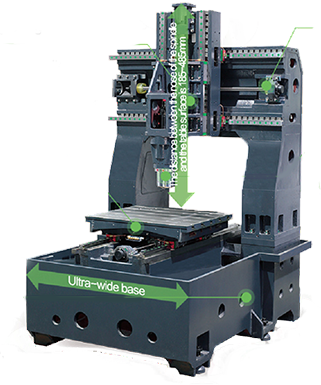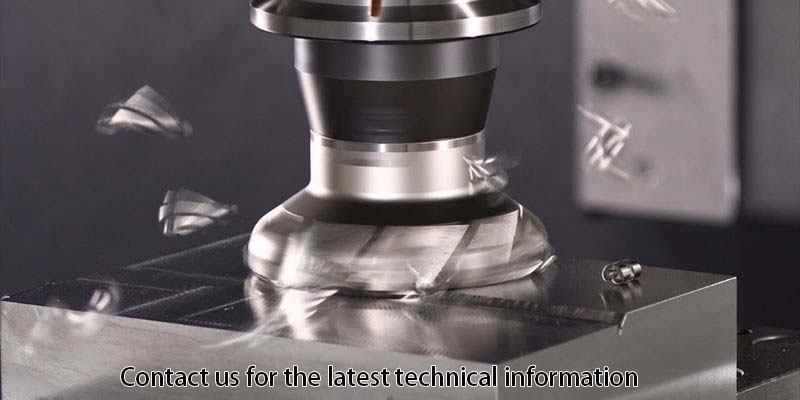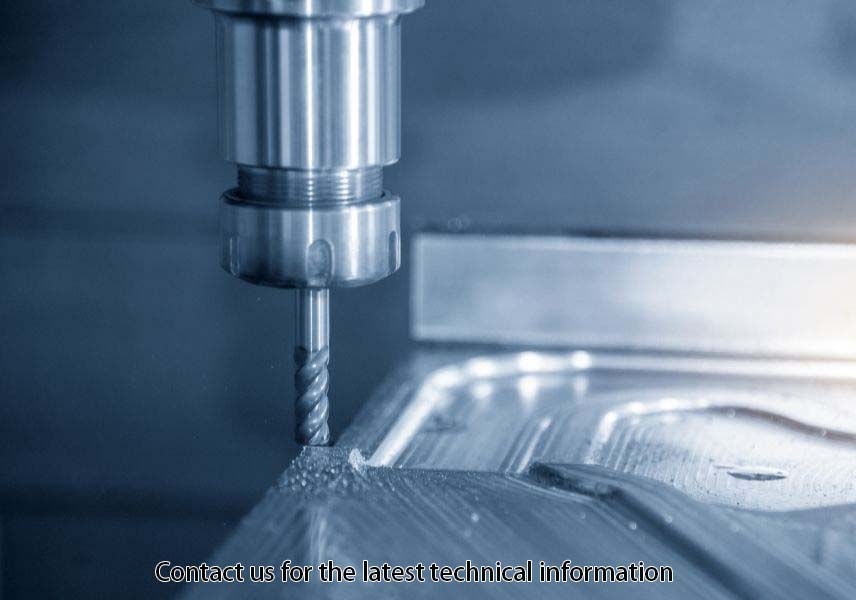Understanding distinguishing between face milling vs end milling techniques are essential in the machining world. You'll delve deep into two popular milling methods: Face milling and end milling. Grasp the technicalities, differences, and applications of both techniques. Equip yourself with precise knowledge to optimize your machining tasks.

CNC means Computer Numerical Control. Next, lathes are tools turning materials. In contrast, mills shape materials using rotary cutters. Both CNCs control mills and lathes. High precision is a CNC benefit.
Lathes make cylindrical objects. Mills handle complex shapes. CNCs offer rapid production, lathes and mills offer detail.
During cnc milling machine, the workpiece remains stationary. On lathes, the workpiece rotates. CNC systems guide accurate movements. Lathe operations demand rotational motion. Mills need precise X, Y, Z movement coordination.
Feed rate impacts milling success. Faster feed rates lead to quicker material removal. However, precision might decrease. CNCs control this rate. Lathes prioritize rotational speed. Milling centers on feed speed. Decisions about feed rate can impact product finish and lifespan.
Mills and lathes form chips. Removal of material results in chip formation. CNC machines optimize chip formation. Lathes produce long, curly chips. Mills might yield smaller chips. Effective chip formation prolongs tool life.
RPM measures spindle speed. High RPM means faster material removal. CNCs regulate these speeds. On lathes, spindle speed determines surface finish. In mills, spindle speed affects chip size and tool lifespan.
CNCs determine tool paths. Mills require intricate paths for complex shapes. Lathes follow simpler, linear paths. In milling, tool path complexity may increase. Ensuring optimal tool paths is pivotal for quality outcomes.
CNC stands for Computer Numerical Control. Next, a lathe shapes material by rotating. On the other hand, a mill uses a rotary cutter.
The mill cutter removes material by cutting. CNC controls both lathe and mill for precision. Accurate parts need CNC control. Thus, CNC ensures top-notch results.
Depth plays a role in milling. A CNC machine uses programming to set depth. Lathes remove layers while rotating. In contrast, mills dig deep into materials. A deeper cut takes more time. A shallow cut is faster. Both CNC mills and lathes ensure proper depth.
Tools matter in milling. For CNC, tool position is crucial. Lathes have tools that touch rotating material. Mills have cutters that move into the material.
Correct tool engagement gives better results. Mistakes in engagement ruin the workpiece. CNC systems prevent such mistakes.
Feed is about cutter movement. In CNC systems, feed rate matters. Lathes move tools at set rates. Mills have cutters that move at specific speeds. Feed per tooth relates to cutter teeth. Proper feed per tooth avoids tool wear. Accurate feeds extend tool life.
Force influences milling results. CNC systems monitor force levels. Lathes apply force to shape workpieces. Mills exert force with cutters. Too much force damages tools. Proper force ensures smooth cuts. CNC tools optimize force for best results.

CNC, short for Computer Numeric Control, guides machine parts. Next, lathes rotate workpieces. Lathes carve objects using sharp tools.
Mills, however, shape metals differently. Mills utilize spinning tools. Unlike lathes, workpieces in mills stay still. Thus, face milling cuts wide areas with precision.
Mill machines create smooth surfaces. Lathes form cylindrical shapes mostly. CNCs provide the guiding logic. Without CNC, precision gets compromised. Especially in complex jobs, CNC proves invaluable. Each machine has unique surface creation capabilities.
Mills have vertical and horizontal types. Vertical mills, notably, perform axial cutting. Lathes lack this capability. Axial cutting delves deep into materials. CNC systems govern the depth and direction.
Mill tools contact materials broadly. Unlike lathe tools that touch points, mills cover areas. CNC plays a pivotal role. It ensures the tool spreads evenly across surfaces. Broad contact ensures uniform results.
Face mills possess multiple cutting teeth. Lathes, in contrast, use single-point cutting. CNCs orchestrate these teeth in mills. The teeth count affects surface finish and speed.
Face milling excels in surface flattening. Mills make materials perfectly flat. CNC ensures optimal machine movement. Lathes don't offer similar flatness. Flattening remains a primary mill advantage.
Contouring forms materials into desired profiles. Mills achieve diverse shapes with ease. Lathes handle round contours predominantly. CNC-controlled mills deliver intricate contours efficiently.
Slotting carves slots into materials. Mills do this with great precision. Lathes aren’t ideal for slotting. CNC guidance is pivotal. It ensures slot dimensions meet requirements.
Mills create perfect square shoulders. Shoulders form right-angle edges on materials. Lathes can't achieve this precisely. CNC systems regulate this shoulder creation in mills.
Pocketing means creating recesses in materials. Mills, guided by CNC, excel here. Lathes aren’t suitable for pocketing. The depth and shape of pockets depend on CNC accuracy.
CNC stands for Computer Numerical Control. Essentially, CNC automates machine tools. On the other hand, a lathe shapes objects by rotating them.
In contrast, a mill uses tools to cut material into desired shapes. CNC machines, lathes, and mills have pivotal roles in manufacturing.
Lathes rotate a workpiece. During this, a fixed cutting tool shapes it. CNC involves computer control of machines, offering precision. Mills differ, using rotational cutters to remove material. All three tools, CNC, lathes, and mills, define modern manufacturing.
The CNC system precisely controls machines, enhancing output. Lathes, traditionally manual, also benefit from CNC tech. Mills use cutting tools to shape workpieces, differing from lathes. Knowledge of CNC, lathes, and mills ensures efficient production.
CNC machines work based on computer inputs, ensuring exactness. Lathes spin the workpiece, applying a cutting tool against it. Unlike lathes, mills employ rotating tools for shaping. These tools, CNC, lathes, and mills, play distinct yet interconnected roles in industries.
In manufacturing, CNC represents technological evolution, controlling machine movements. Lathes, ancient tools, remain crucial, rotating workpieces against fixed cutters. Mills, in contrast, move their cutters to shape items. CNC, lathes, and mills: each serves a unique function in modern industry.
|
Attributes/Categories |
Face Milling |
Core Concept |
Applications |
Tools Used |
|
Description |
In-depth exploration of milling the surface of a material. |
Principal foundation of the milling process. |
Main usage scenarios. |
Instruments and equipment deployed. |
|
Number of Items Detailed |
N/A |
5 |
5 |
5 |
|
First Item |
N/A |
Wide Cutting |
Surface Flattening |
Shell mills |
|
Second Item |
N/A |
Surface Creation |
Contouring |
Solid cutters |
|
Third Item |
N/A |
Axial Cutting |
Slotting |
High-feed mills |
|
Fourth Item |
N/A |
Broad Contact |
Square Shoulder |
Helical cutters |
|
Fifth Item |
N/A |
Multiple Teeth |
Pocketing |
Cutter arbors |
Table on Face Milling An In-Depth Look!

End milling is a CNC operation. CNC stands for Computer Numerical Control. In CNC, computers guide machines. Lathes and mills are two major machines. Lathes rotate workpieces. Mills, on the other hand, rotate tools. End milling is specific to mills.
Here, a tool called an end mill cuts materials. The material stays still while the tool moves. CNC ensures precise movements. End mills can be various sizes. They can have different shapes too. Many industries use end milling. From cars to gadgets, end milling has a role.
Slotting uses end mills to create slots. These slots can be various widths. They appear in machine parts. Slots help in assembling structures.
Profiling shapes the side of a material. An end mill follows a set pattern. Precise edges and profiles emerge. Such precision aids in component fitting.
Plunging directly dives into material. End mills enter the material vertically. They make holes or deep cavities. Think of machinery that needs hollow sections.
In ramp milling, end mills move at an angle. They don’t go straight down. This method ensures smoother cuts. Components like aircraft parts benefit.
Here, end mills create curves. Contours can be intricate. Think of car body parts. Contour milling offers the needed accuracy.
Flute end mills have spiral grooves. These grooves aid in chip removal. Flutes can be numerous. More flutes mean finer finishes.
Chamfer mills create angles. Typically, on a material’s edge. They make assembly easier. Perfect edges reduce fitting errors.
Roughing end mills make initial cuts. They remove lots of material fast. These are not for finishing but rapid material removal.

In face milling, the cutting action occurs primarily axially, meaning on the face or end of the tool. On the other hand, in peripheral or end milling, cutting takes place radically, around the tool's circumference.
Face milling, due to its axial approach, covers a broad surface area at once. Conversely, peripheral milling touches the workpiece at a single line of contact during each pass, increasing multiple interactions.
Precision counts when milling. Generally, face milling delivers a smoother surface finish because of its continuous contact. Yet, peripheral milling might provide a varied texture due to its line-by-line method.
MRR (Material Removal Rate) matters in manufacturing. Face milling typically boasts a higher MRR, as it engages more of the workpiece surface. Peripheral milling, while efficient, might require multiple passes for significant material removal.
Time is a resource in manufacturing. Face milling, with its broader surface contact, often reduces operation time. In contrast, peripheral milling might be slower due to the requirement of multiple passes.
Quality surfaces are a demand in most industries. Face milling's continuous action provides consistently smooth finishes. Meanwhile, peripheral milling, due to its radial action, might sometimes leave distinct cut marks.
Durability impacts the bottom line. Tools used for face milling might wear out faster because of their extensive surface contact. Peripheral milling tools, engaging in line-by-line cutting, often experience less wear, extending their operational life.
Not every method suits every material. Face milling performs exceptionally well on softer materials, ensuring rapid material removal. Yet, harder materials might better accommodate peripheral milling techniques due to the focused force distribution.
Precision in face milling requires optimal feed rates. Too high or low can compromises surface finish. A consistent feed rate ensures even metal removal.
Choosing the right tool proves critical. Different materials demand various tool types. Carbide tools, for instance, excel in machining steel. In contrast, high-speed steel (HSS) tools are suitable for softer metals. Selection significantly influences the finish quality.
The RPM (Revolutions per Minute) at which the tool spins matters. A higher RPM might cause excessive heat. Conversely, a slower RPM could cause tool wear.
Matching spindle speed with material and tool type is essential. Adjustments to the spindle speed can transform the surface finish from course to mirror-smooth.
Effective machining requires temperature control. Overheating damages tools and the workpiece. Applying coolant during milling disperses heat. Moreover, using the correct type and quantity of coolant reduces wear and ensures longevity.
While milling, overlapping each pass minimizes surface inconsistencies. However, excessive overlap wastes time. Striking the right balance guarantees uniform surfaces without compromising efficiency.
Transitioning into various milling techniques, consider ramp milling. Within CNC processes, a cutting tool moves at an angle with the workpiece surface, not just vertically.
The angle of movement becomes critical, as different materials require specific angles for precision. Understanding this technique ensures accuracy in industries like aerospace, where precision is paramount.
Next on the list is plunge milling. Unlike conventional milling methods, here the tool moves vertically into the material. Think of CNC machines plunging straight down, creating deep slots. With plunge milling, depth becomes the primary parameter.
In automotive industries, the right depth determines the efficiency of engine parts.
Advancements in milling technology brought forth the high-speed milling. The spindle speed, often exceeding 10,000 RPM, becomes the core metric. With such high speeds, reduction in machining time becomes evident. Aerospace and automotive sectors benefit immensely, aiming for faster production cycles.
Delve deeper into advanced techniques, and you'll encounter cryogenic milling. Here, liquid nitrogen cools the cutting tool during operations. The cooling rate, often measured in liters per minute, stands out as the defining factor.
Metals like titanium, notorious for heat generation during machining, become easier to mill. The aviation industry, working with these metals, adopts cryogenic milling for extended tool life.
In this method, CNC machines vary both speed and direction during the cut. The rate of change, sometimes noted in RPM per second, becomes instrumental. Industries, especially mold-making, prioritize dynamic milling. The varying speeds allow for intricate designs without excessive tool wear.
In milling operations, the tool diameter plays a pivotal role. A larger diameter ensures more stability during the cut. Precision-mold depends on choosing the right size for the task at hand.
Metals like aluminum, steel, or titanium have different characteristics. Recognize each material's properties. A soft material like aluminum requires different parameters compared to hard stainless steel. Match the tool material for optimal performance.
A crucial parameter, machine power determines the capacity to handle tough materials. More horsepower enables faster, deeper cuts. Always refer to the machine's specification sheet for accurate details.
This refers to the amount of material removed by each cutter tooth. Correctly setting the chip load prevents tool breakage. Monitor and adjust chip load to protect tools and achieve superior finishes.
Your workpiece size matters. For larger workpieces, a larger tool diameter and higher machine power become essential. Ensure the machine bed can accommodate the workpiece.
Throughout this discussion, the intricacies of the face milling vs end milling techniques have been explored. Recognizing the differences, strengths, and weaknesses of each method empowers better decision-making in machining operations. For top-tier milling tools and expertise, trust CNCYANGSEN.